With just over two years to go until Rio kicks off the 2016 Olympic Games, Olympic officials are taking stock of how ready Rio really is. The short answer? They’re not. But how far behind are its preparations? And can the city possibly catch up in time?
Picture: The Maracana Stadium, Buda Mendes
We dug through a slew of recent reports about the preparations to find out. Here’s how things really stand in Rio, and what can be done to fix them.
The Water
Most of the hubub of the past few weeks has been focused around Rio’s water — specifically, Guanabara Bay, the body of water where the sailing and windsurfing events will take place in 2016. On May 7, the AP obtained a letter from Brazilian environmental officials reporting that the bay won’t be clean in time for the Olympics. Instead, the letter explains, it will take another decade to curb the pollution sufficiently.
A week later, a biologist on the site called it a “real latrine“, dangerous for swimmers and full of trash, and The New York Times published a video report about the state of the bay, detailing how Olympic hopefuls must contend with raw sewage, discarded furniture, animal carcasses (as well as human ones, according to one famous Brazilian sailor) and other forms of trash.
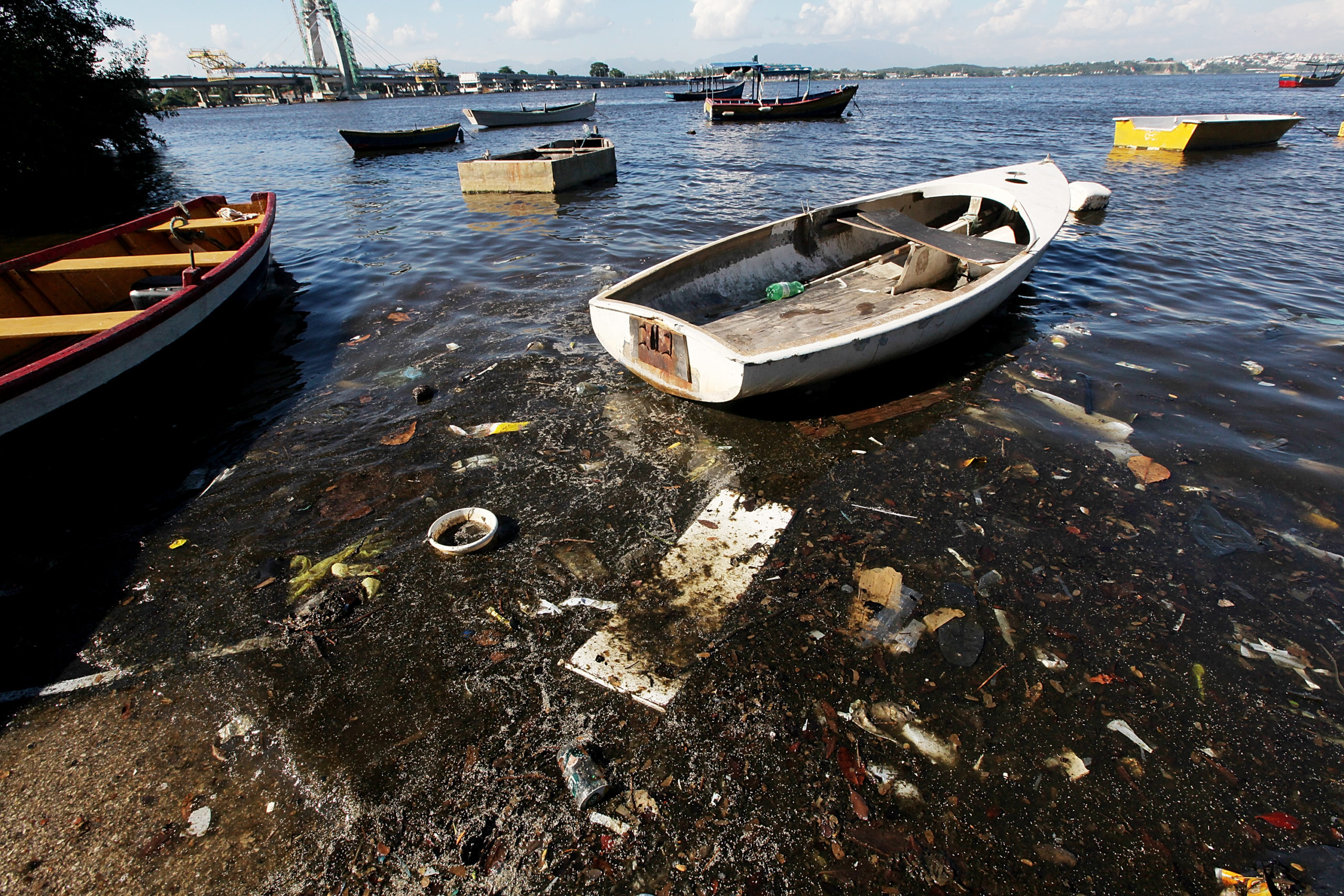
Boats float along the shoreline of the polluted waters of Guanabara Bay, the site of sailing events during the Rio 2016 Olympic Games. Photo by Mario Tama/Getty Images.
According to the NYT, the city had pledged to treat 80 per cent of the sewage leaking into the bay, but have only hit 40 per cent thusfar. The attempts to clean it up go back decades:
Officials vowed to tackle the problem after the United Nations Earth Summit here in 1992 drew scrutiny of Rio’s foul waters. The Rio state government secured more than $US1 billion in loans from Japan’s government and the Inter-American Development Bank for cleanup projects, but they have not been even remotely successful, according to environmental experts.
What’s to be done? A Brazilian sailor who won two gold medals in the Olympics, Lars Grael, argues that the aquatic competitions should be moved to another area with cleaner water, but Rio officials claim the Bay is undergoing large-scale treatments and will be clean enough to use in 2016, although it won’t be perfect.
In other words, efforts to clear out the sewage and sludge aren’t working as well as they need to, and there is no backup plan.
The Stadiums & Park
Leaving the bay behind for a second, how are the rest of the venues shaping up?
On May 14, a press release on Rio’s official website stressed that 38 per cent of the venues are already finished. Eleven of the 29 Rio venues are ready to be used, while eight more require some renovation, and 10 more are still under construction.
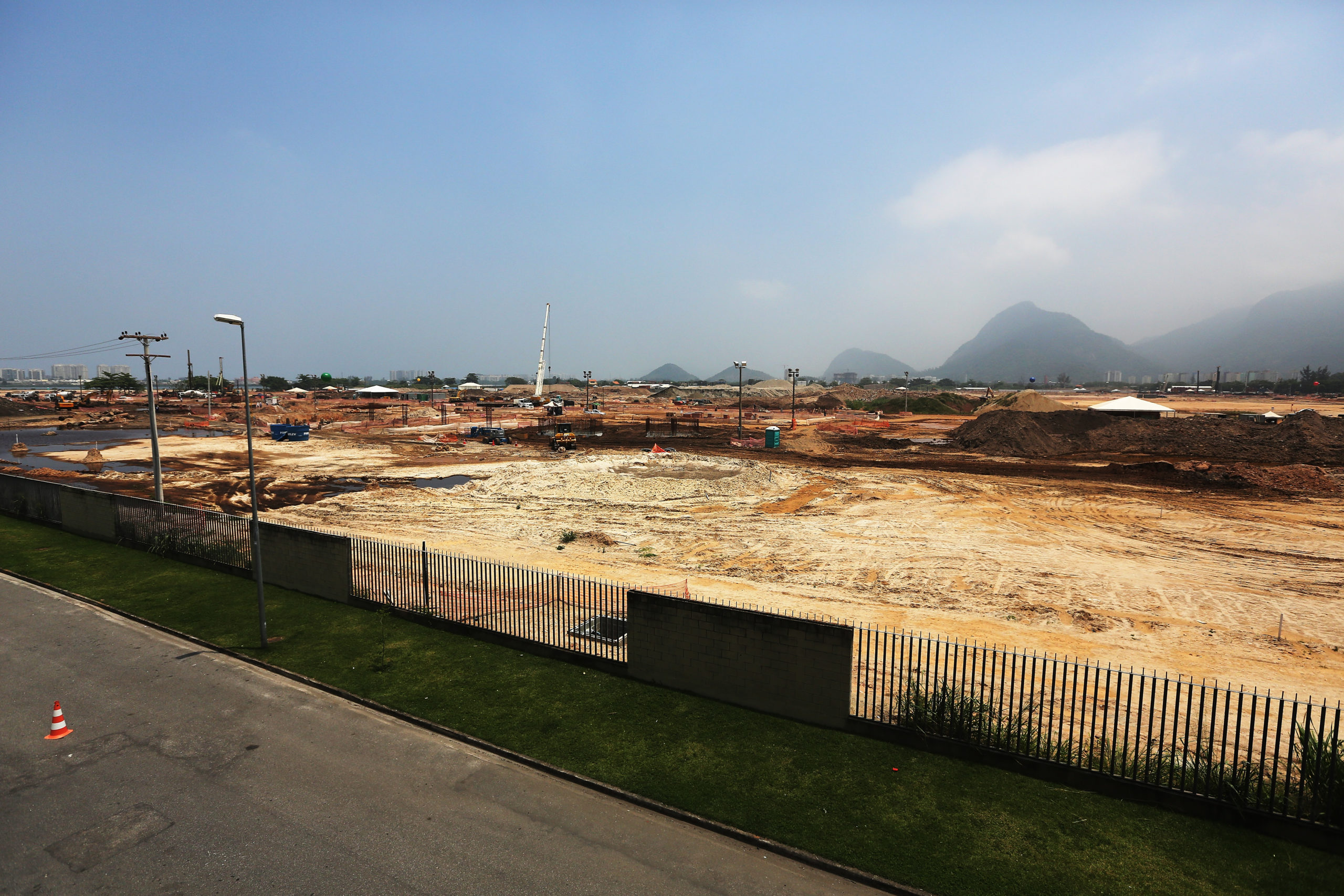
Construction continues at Rio Olympic Park on 23 October 2013 in Rio de Janeiro, Brazil. Photo by Mario Tama/Getty Images.
Those eight stadiums and venues requiring renovation seem to be causing a good deal of problems on their own. Estádio Olímpico João Havelange, an existing stadium completed in 2007, is being expanded to fit 13,000 more seats for the games. But in 2013, it was shuttered after it was discovered that its roof was prone to collapse during high winds. Luckily, the problem was caught early enough, and crews have spent the past year rebuilding the roof structure. The stadium is being used for the upcoming World Cup.
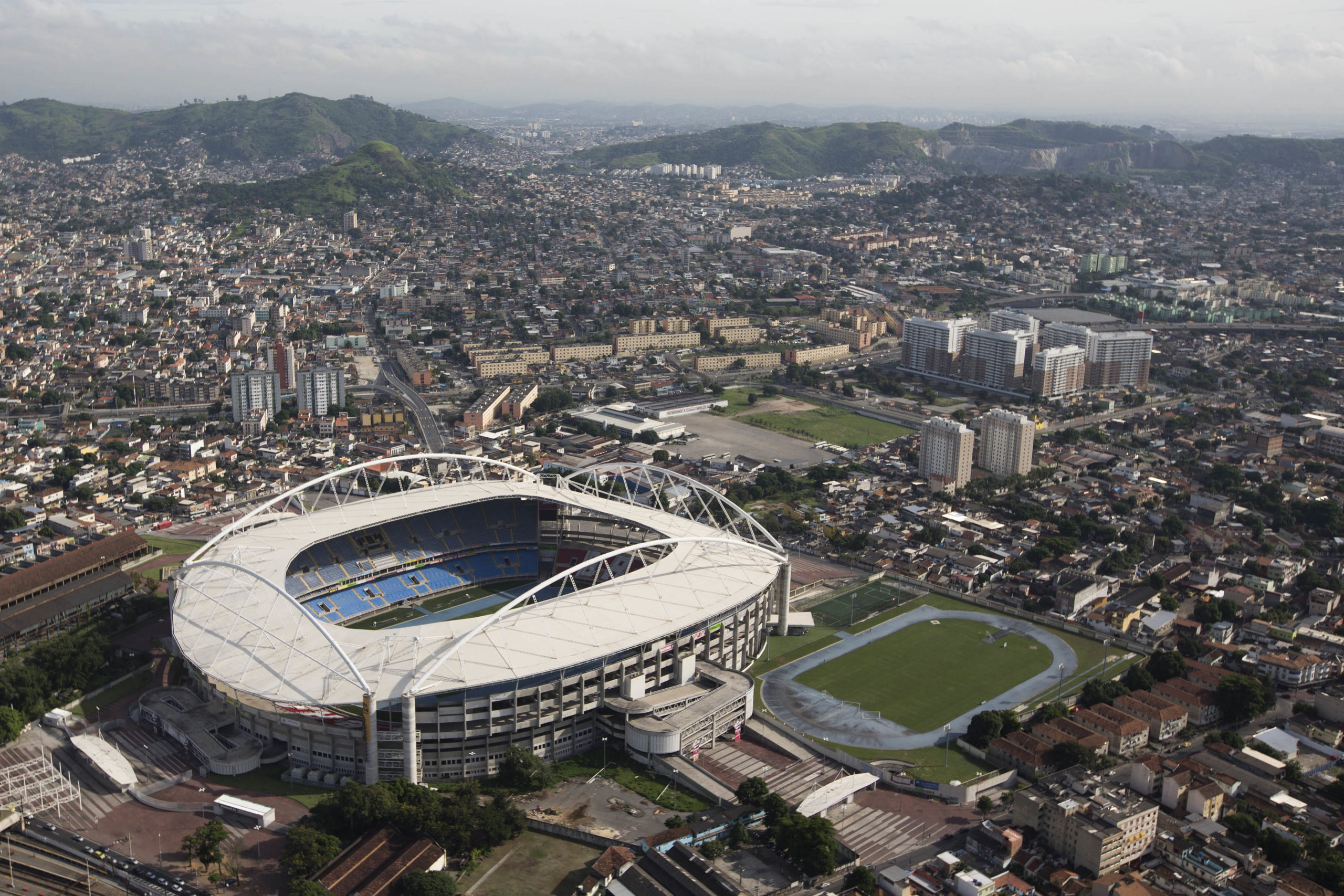
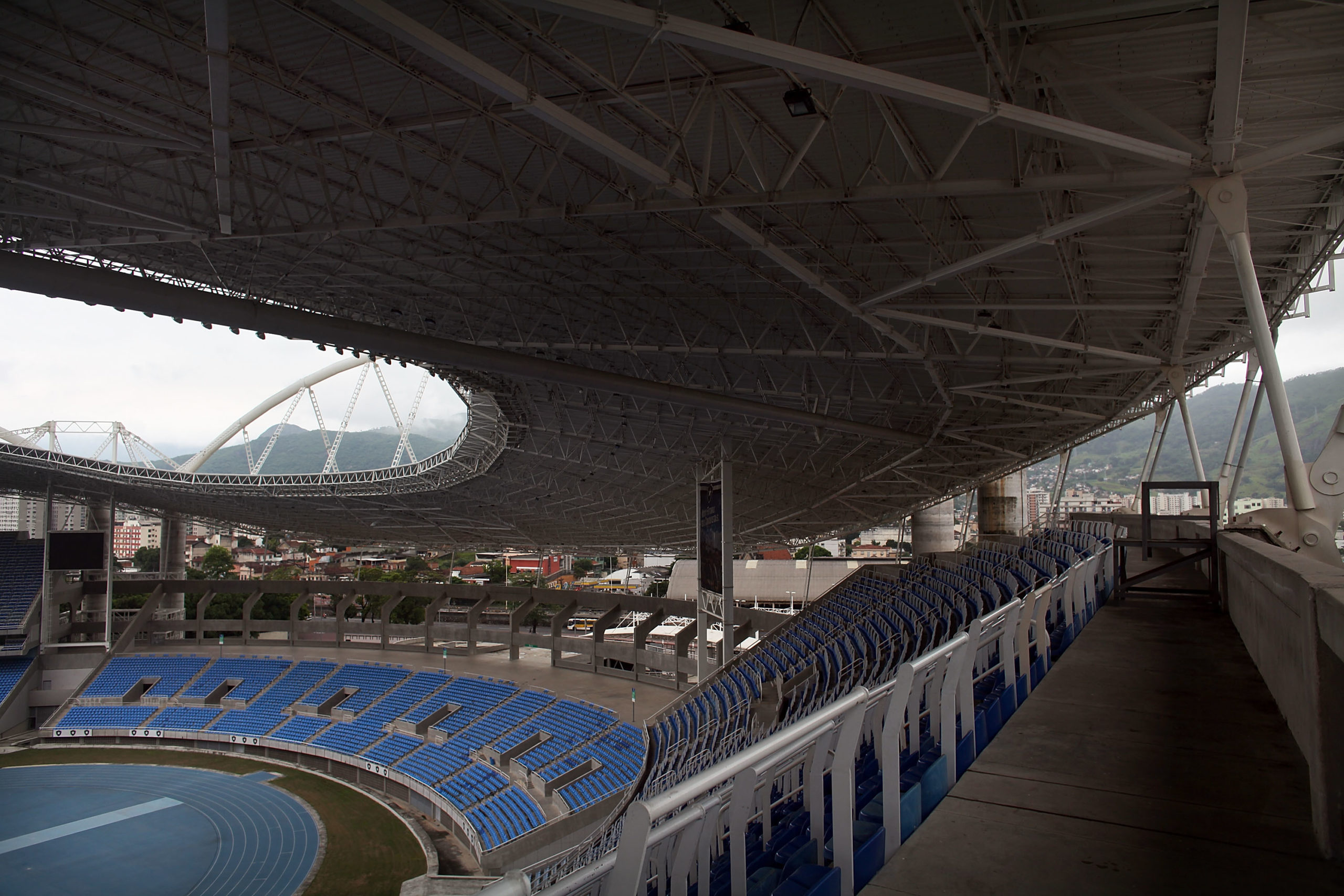
The roof of the stadium Estadio Olimpico Joao Havelange is being completely rebuilt after structural deficiencies were discovered. Top: AP Photo/Felipe Dana. Bottom: Spencer Platt/Getty Images.
Maracana Stadium, a massive venue that was originally opened in 1950, has also undergone a major facelift. In fact, it was practically rebuilt from the ground up over the last year, increasing its seating capacity and giving it a brand-new seating bowl and teflon-coated roof structure. The renovated venue is already up and running.

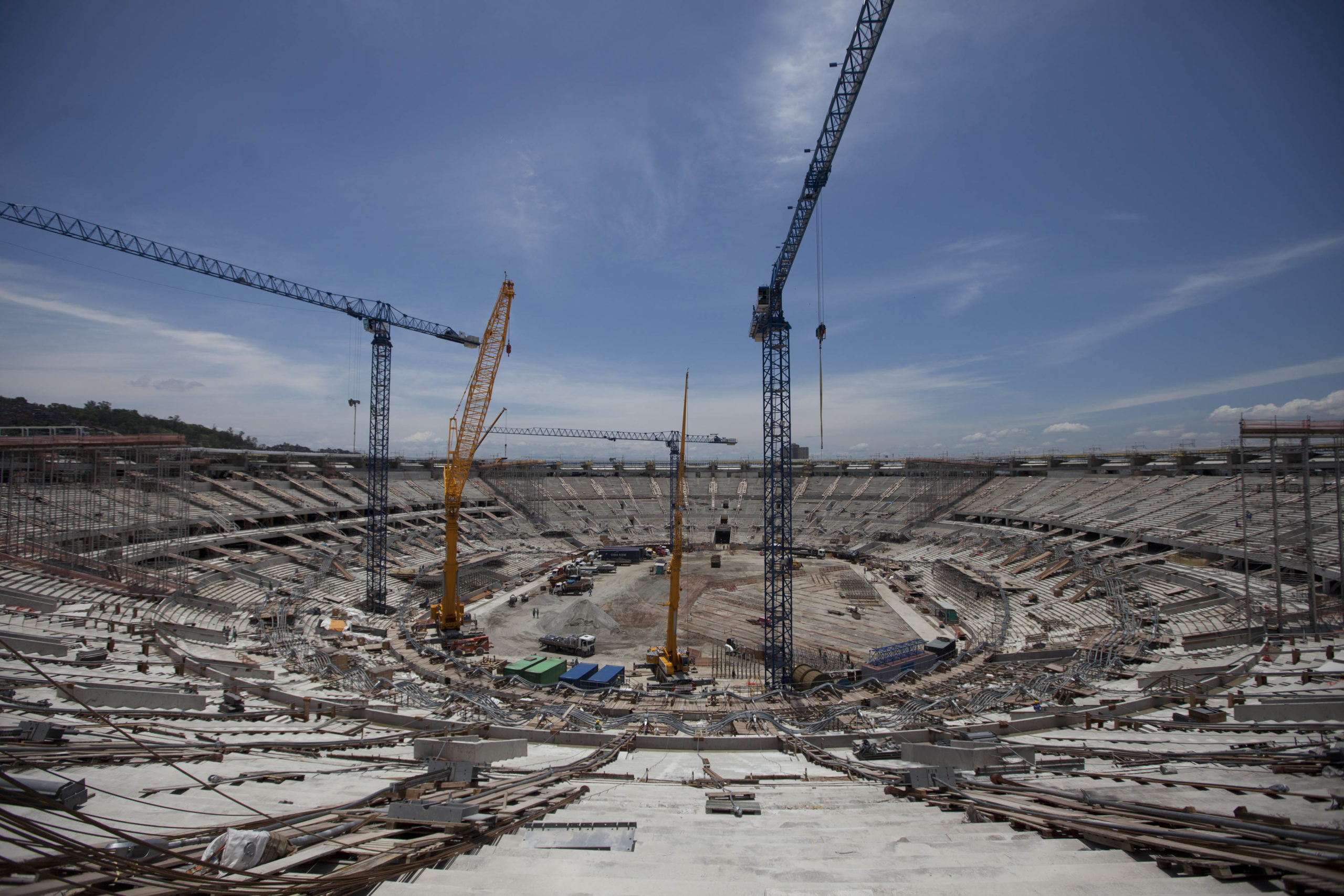
The Maracana soccer stadium was enlarged for new World Cup and Olympic crowds beginning in 2012. Top: Buda Mendes. Bottom: AP Photo/Felipe Dana.
What about those ten pesky venues that aren’t yet finished? In particular, Olympic administrators are drawing attention to one of the four main regions of development: the Deodoro Zone, in the west of the city. Here’s where equestrian, cycling (BMX and mountain bike), modern pentathlon, shooting, slalom canoeing, hockey, and fencing will all take place. And according to IOC Vice President John Coates, this is where the most work needs to be done:
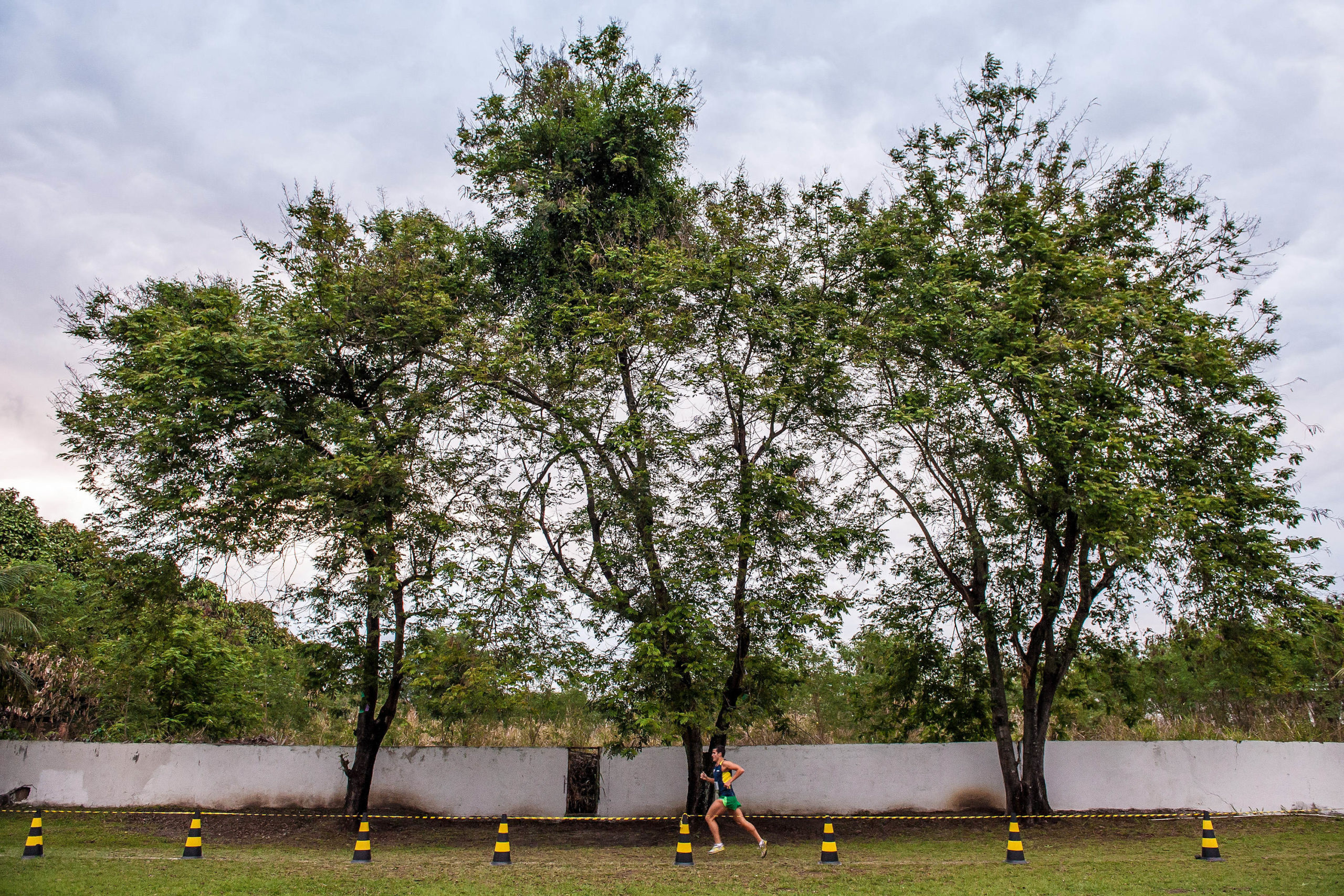
The special concern was the Deodoro zone, which is about half an hour from the Olympic village. There’s nine sports being held out there. And they’re not sports that are easy to (cater to). They’re not temporary stadiums that just need to be put up. We’re talking about slalom, canoe, BMX, mountain bike … the equestrian cross-country course, rugby 7s. So they’re complex venues that need to be established. And, literally, not a blade of grass had moved since I was there in October.
Luis Magno competes in the Brazilian Modern Pentathlon Championship 2013 at Olympic Park Deodoro. Photo by Buda Mendes/Getty Images.
In response to Coates’ comments, the federations that stage each of these eight sports announced they would be sending delegates to Rio for “emergency” visits to the construction sites to “speed up the progress,” according to Around the Rings. But Rio’s mayor shot back, saying “we have no room to spare with Deodoro. We cannot make a single mistake here. But there is still time to get it done.”
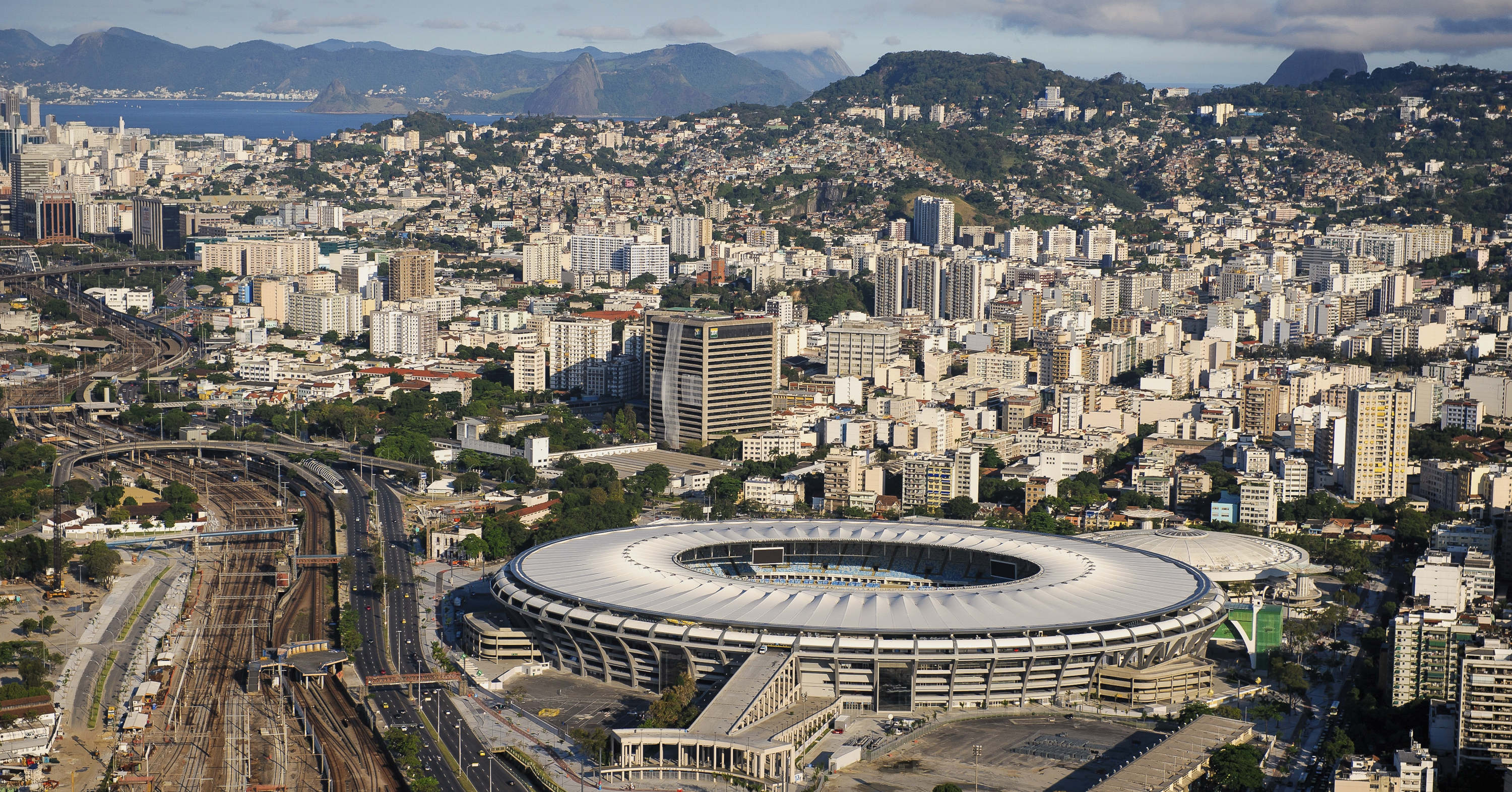
An aerial view of Maracana stadium on the 1,000th day before the Rio 2016 Olympic Games on November 9, 2013 in Rio de Janeiro, Brazil. Getty images.
It also doesn’t help that in April, 2,500 workers at the Olympic Park site went on strike seeking better pay and more benefits. Though work is reportedly going ahead now, it seems likely that the strikes will continue as the work intensifies over the next few months.
Planting had finally begun on the Games’ official golf course, one of the sites that had raised the hackles of the IOC in early April. But this month, organisers announced the coursework had been halted after a state prosecutor moved to block it over concerns that it’s taking place on protecting wetlands without the proper documentation.
Meanwhile, some competing countries are concerned about where their athletes will stay, though their fears seem relatively unfounded with another two years left to go. John Coates — the IOC Vice President (and Australian) whose comments incited rumours that London would be given the 2016 games as a Plan B — announced that Australia has set aside $US1.6 million to ensure Australian athletes will be housed outside of the official Olympic Village, should things get weird.
The Infrastructure
Rio plans to spend $US16 billion on infrastructure, according to its mayor, and plans to renovate huge portions of its physical systems, from the airport, to the port, to the very sewers.
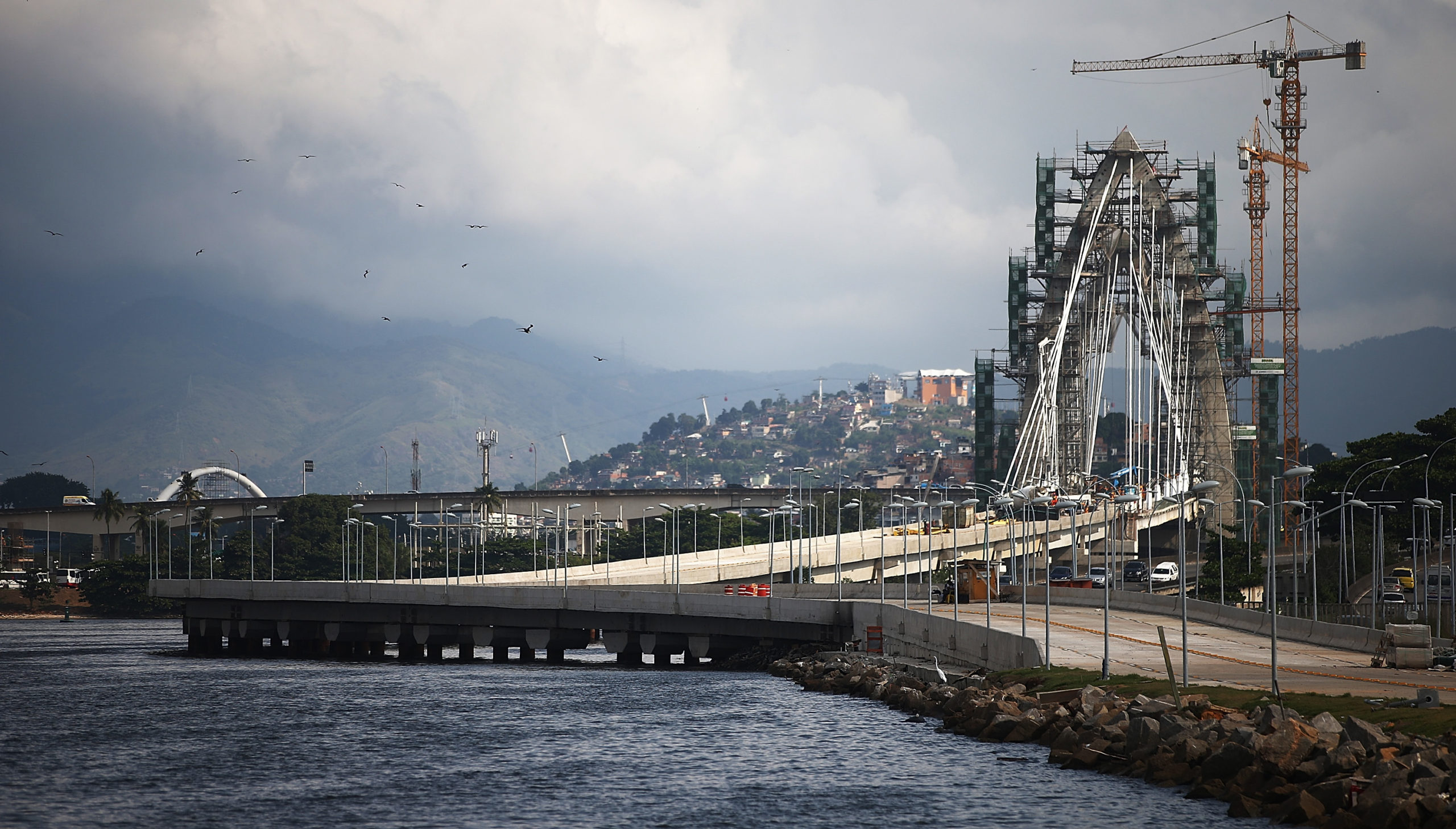
Work continues on the TransCarioca BRT bridge, which will link Rio’s international airport with Barra da Tijuca, the main site of the Rio 2016 Olympic Games. Photo by Mario Tama/Getty Images.
UrbanLand did the calculations, and describes the work on Rio’s gateway with the following stats:
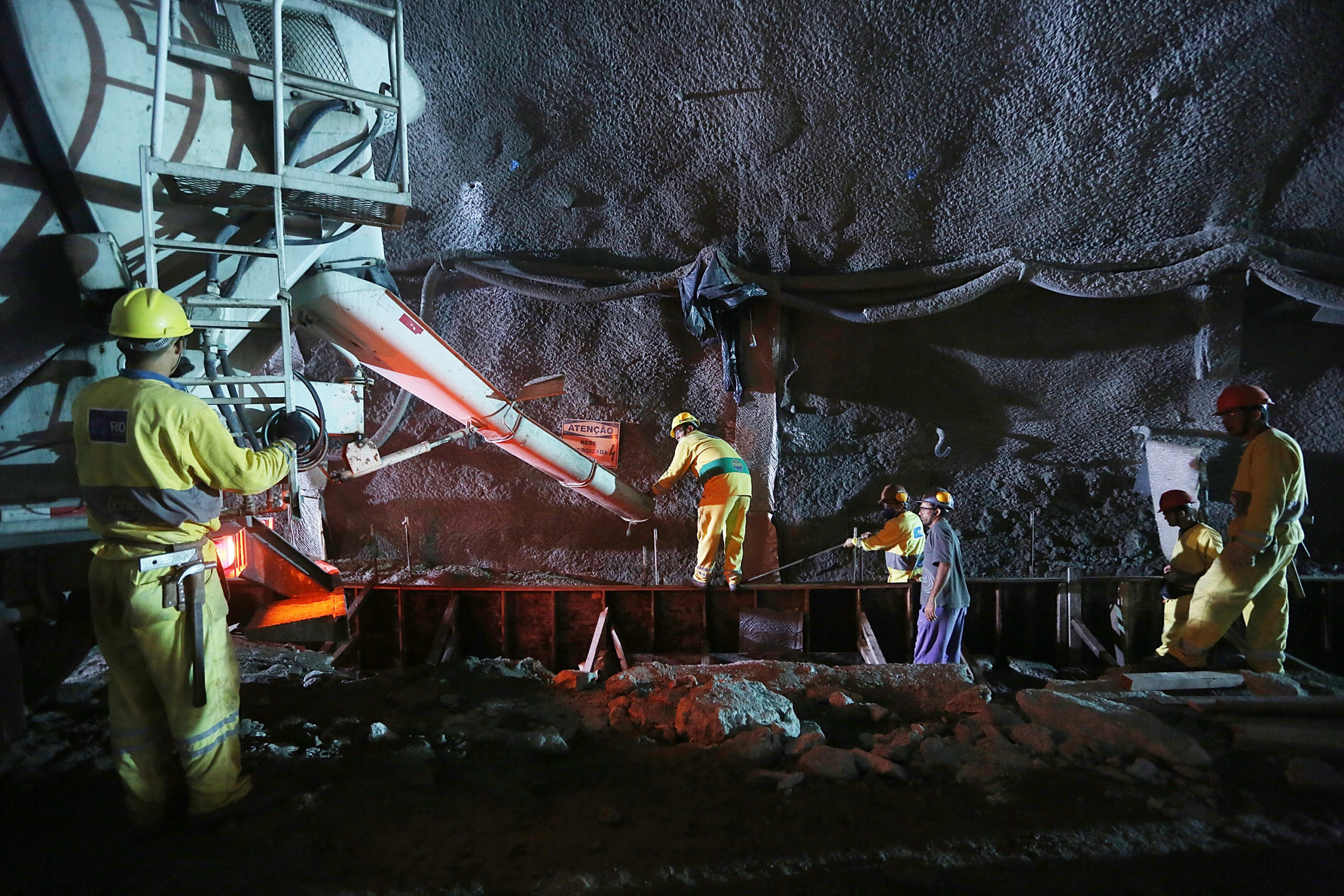
2.5 miles (4 km) of tunnels and overpasses, redevelopment of 43.5 miles (70 km) of streets, and construction of 435 miles (700 km) of sewer, water, and telephone networks. The Porto Maravilha project also includes the 9.2 million-square-foot (850,000 sq m) Olympic Port, which will include the Media Village, the Referee Village, a hotel, and operations centres.
Construction continues on a new 2.5 mile (4 kilometers) automobile tunnel system beneath the port district in Tio. Photo by Mario Tama/Getty Images.
Not to mention public transit. Rio’s plan to expand its transit system is sprawling: The idea is to create a ring between all four “clusters” of venues with a newly-renovated train system, four new bus lines, an expanded subway system with seven more miles of track and six more stations, and more, all to remedy its current congested system.
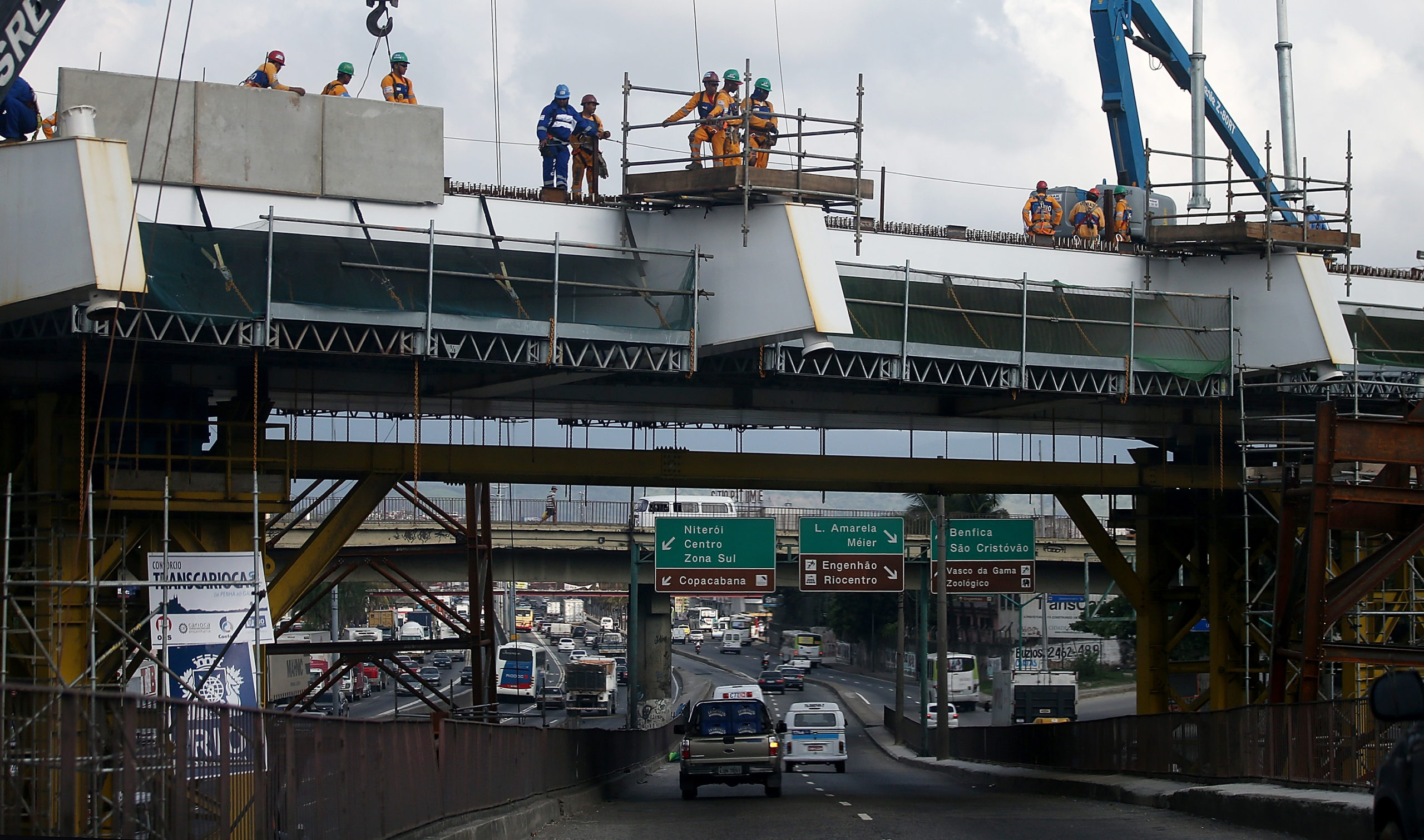
Work continues on a bridge for the Transcarioca BRT (Bus Rapid Transit) highway being constructed on May 9, 2014 in Rio de Janeiro, Brazil. Photo by Mario Tama/Getty Images.
In addition to the public infrastructure being built, there’s a whole network of private ones taking shape, too. In The Guardian this week, we get a glimpse of a massive surveillance network being set up by Rio’s government. It’s “the world’s most ambitious integrated urban command center,” explains Christopher Frey, designed to monitor everything from flooding to the possibility of mudslides in the city’s favelas.
While these are arguably the biggest construction projects on Rio’s docket, they seem to be coming along fine — and even if they aren’t finished right when the Olympics begin, they won’t necessarily affect the games directly. These massive infrastructural moves are positioned to transform the city — and when the athletes and press pack up and head home in two years, these will be the projects that remain vital to Rio. Regardless of how the Olympics go, they will benefit the city itself.
So Can Rio Pull It Off?
Finishing ten stadiums in 26 months is no small task. On the other hand, as we saw in Sochi and even Athens, the IOC has complained publicly about the preparedness of host cities pretty regularly over the past decade. Even though the concern is real, it’s also a strategy to spur progress.
We’re bound to learn plenty more about the progress in Rio over the next few months. The city still has a long way to go. What will happen if it doesn’t finish? In truth, it wouldn’t be the end of the world. We recently learned that Brazilian officials “gave up” on several unfinished venues for the World Cup — and you know what? Alternatives have been found.
If the same thing were to happen Rio, maybe it would teach the IOC — and the world in general — that the Olympics don’t have to be a wild goose chase of billion-dollar projects built on a barely feasible schedule. Perhaps they’d prove that the Olympics, regardless of where they take place, are ultimately just about the games. And that might not be such a bad thing.
